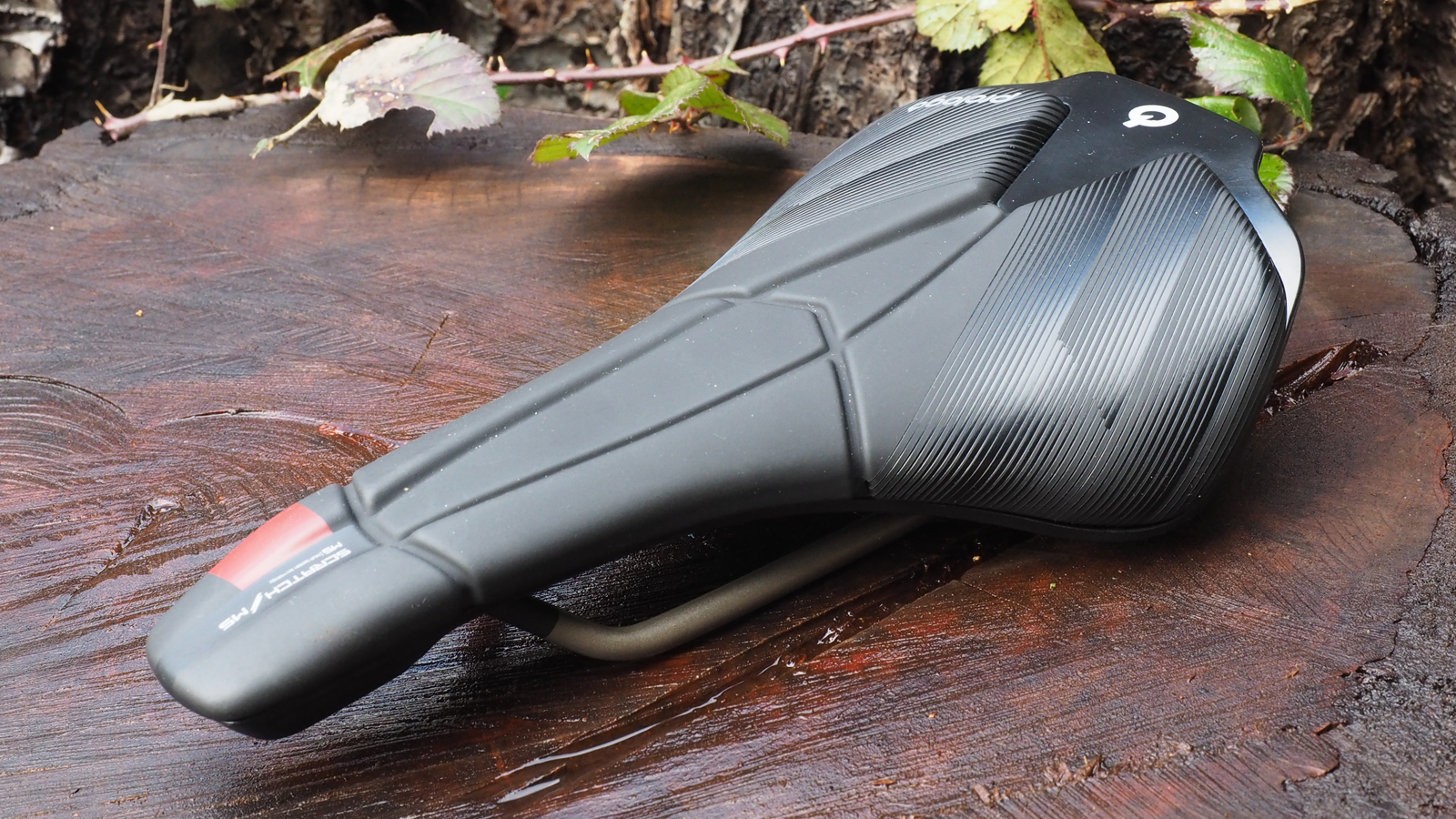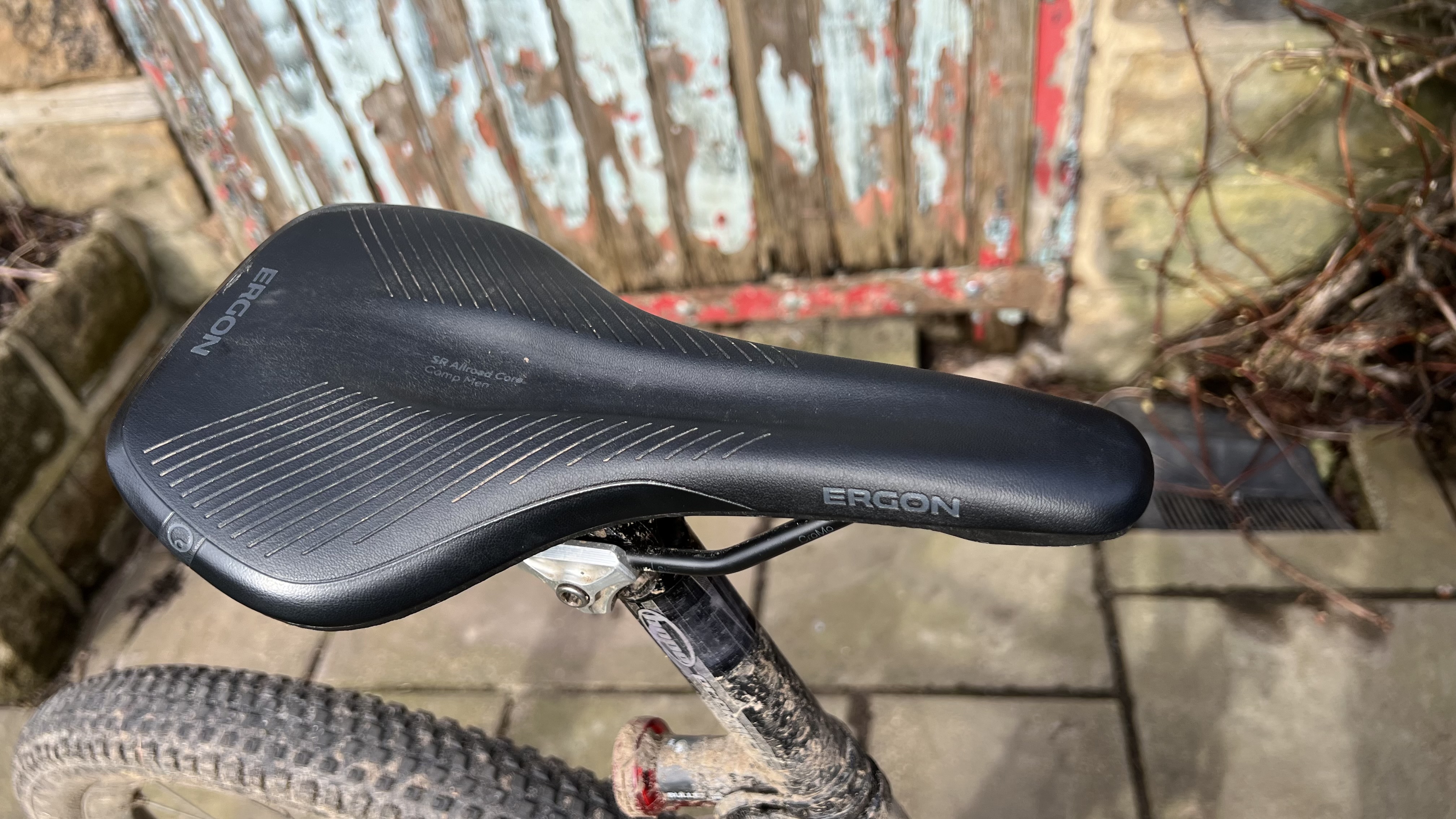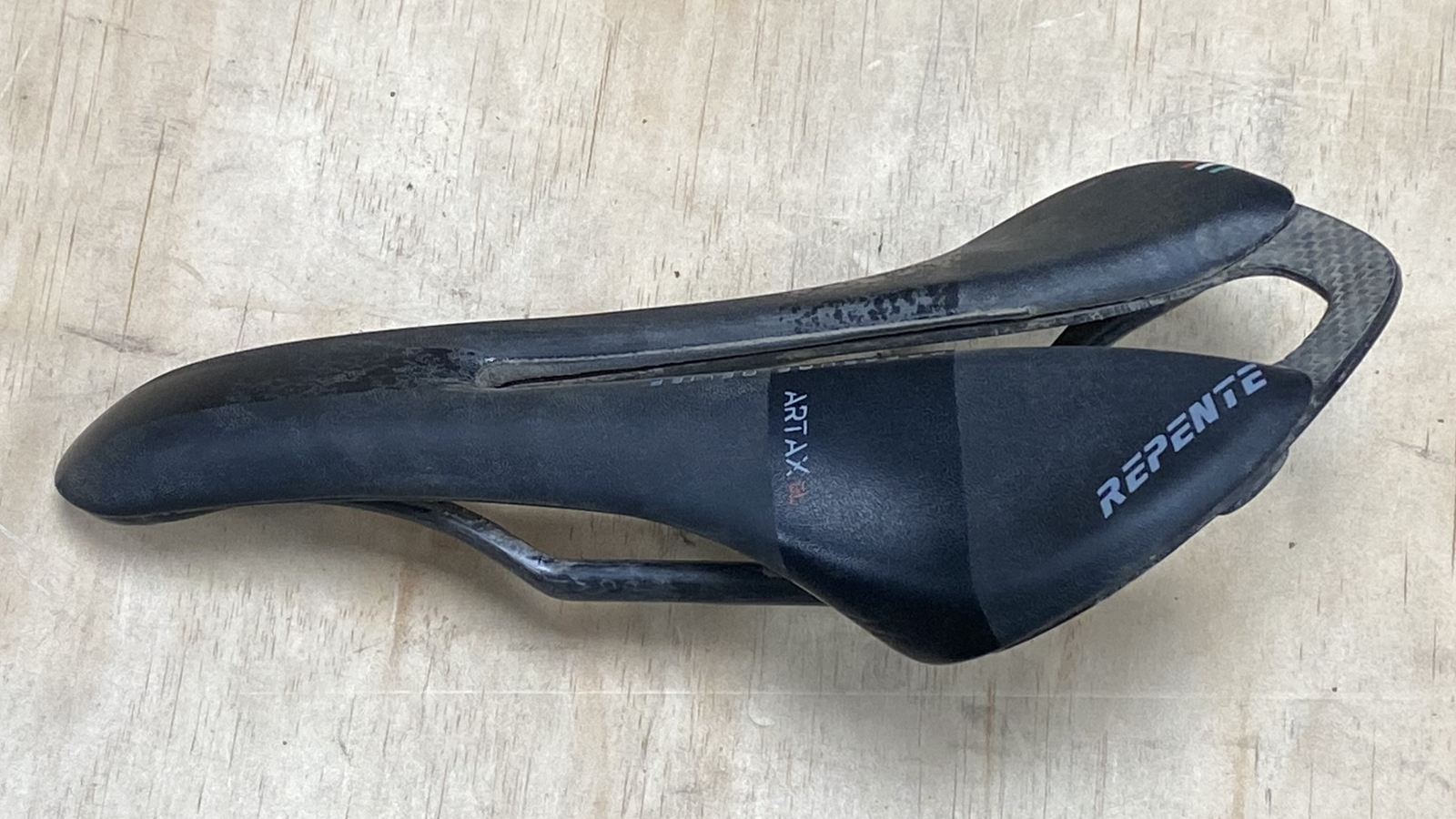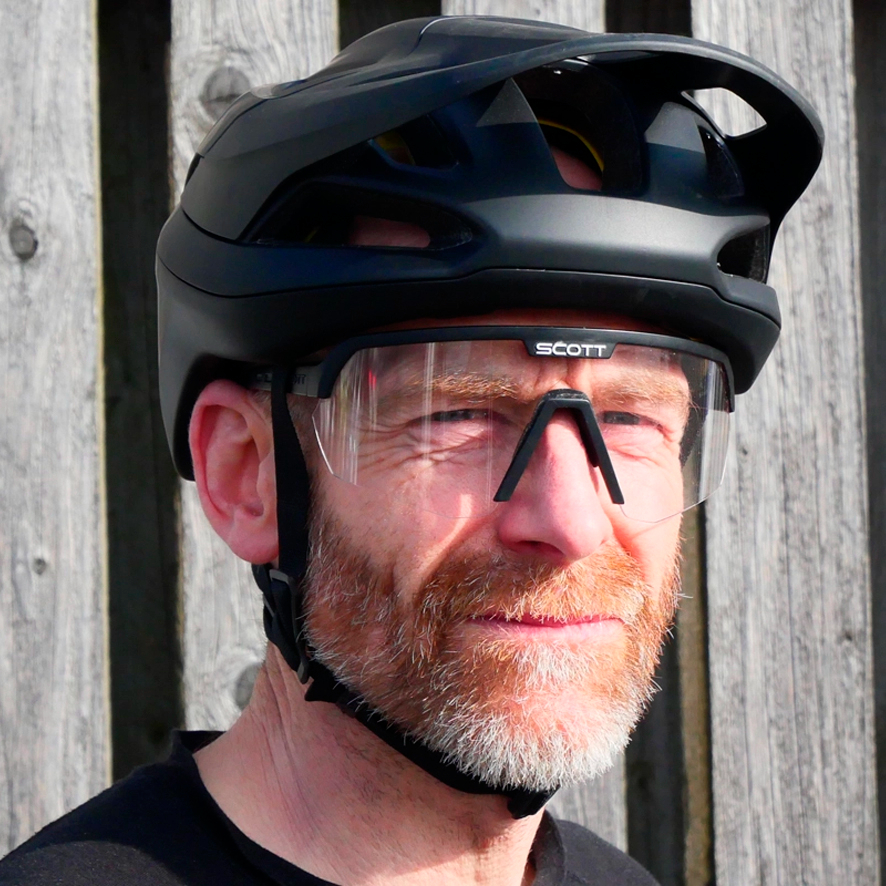Best gravel bike saddles 2026 – gravel-specific seats for drop-bar off-road riding
Specifically designed to meet the challenges of gravel riding, these are the best gravel bike saddles to keep you comfortable on long, rough off-road rides

The best gravel bike saddles not only give the best fit and comfort, but offer gravel-specific features, such as covers for the cutout or luggage fitments, to cater to the unique demands of riding off-road over long distances. The gravel bike niche has already developed its own geometry, groupsets and tires so it isn’t surprising that as brands have developed a deeper understanding of gravel riding, componentry such as the best gravel bike pedals, saddles and handlebars have followed.
Thanks to the versatility of the best gravel bikes, riders are covering longer distances and riding increasingly varied terrain so choosing the best gravel bike saddle is vital for comfort. Instead of searching for the best gravel bike saddle, it seems logical that your best mountain bike saddle or favorite road bike saddle will do the job perfectly well. It may perform admirably, but it will be compromised as gravel riding is not its main application.
As well as the shape of the saddle, which can be quite a personal consideration, when you’re looking for a gravel bike saddle you’ll want to research the material and weight of the saddle rails, how much padding there is to absorb some of the vibrations, and whether there is a hard-wearing finish to deal with all the extra dirt and spray.
Keep reading for Bike Perfect’s pick of the best gravel bike saddles or skip to the bottom for our tips on how to choose the right option for you.
Best gravel bike saddles
Why trust BikePerfect

Specifications
Reasons to buy
Reasons to avoid
The AllRoad Open-Fit Carbon FX has been designed by Selle San Marco as a saddle for adventuring both off- and on-road. The carbon fiber shell has a long shape and a generous cutout is long enough to add comfort across the full length of the saddle. Finishing touches come in the form of Cordura-like woven material on the edges to protect the Microfeel saddle cover and the Biofoam underneath. Selle San Marco says that this special closed foam double density foam adds comfort yet still provides support by moving with the rider's pelvis.
The unusual 9.8x7mm DNA carbon rail size could prove problematic for some seatpost clamps, so it's worth double-checking the saddle will fit before you make a purchase. Selle San Marco has reinforced the saddle rails with a crossing X shape knot (Dynamic Node Action) to reduce twisting forces from pedaling without affecting compliance.
With its light weight and clever build, in testing we found the AllRoad Open-Fit Carbon FX unobtrusive, yet supportive in just the right way. The curved sides meant out tester could easily shift body position on the trails, while the raised back gave degree of security and helped on climbs. The cushioning gave contact with the bike, while offering a great vibration-reducing effect. It's a peach of a saddle for off-road riding. Find out more in our full review of the Selle San Marco AllRoad Open-Fit Carbon FX.

Specifications
Reasons to buy
Reasons to avoid
Prologo's Scratch saddles crossover multi-disciplines, however, the AGX version has been specifically tuned to excel for gravel riding. Unlike the standard Scratch, the AGX version uses thicker foam, a more flexible base for added compliance, and raised graphics on the back of the saddle which aren't just aesthetics but increase grip when wrestling up steep gradients.
Prologo's Multi-Sector System design uses zonal padding to tailor comfort and support, allowing each section of the saddle to work independently. Tirox alloy rails add a little comfort and add some extra durability in rough and gritty conditions. Disappointingly Prologo doesn't offer the Scratch AGX in a PAS (cutout) version for extra relief as it does with the other Scratch models.
For our tester's shape and style, the Scratch AGX hit the spot. Firm, but soft enough, its semi-curved shape is broad and flat enough that I felt nicely planted but rounded enough that I could move around easily. The T-shape design meant he could use the long nose to steer lightly using the pressure of his thigh, and the nose's downward curve made it easy to slide on and off the seat when needed.
Overall, it may not be cheap or super-light but it's a saddle you can rely on. For more details, check out our full Prologo Scratch M5 AGX review.

Specifications
Reasons to buy
Reasons to avoid
As saddles have got shorter, Specialized has been at the forefront with its Power saddle range. A unisex saddle, it was actually initially designed as a women-specific model, however, the shape translated across both genders equally. Designed for long-distance riding, the Power saddle locks the rider in place and has been subject to Specialized's Body Geometry research to offer sit-bone support with the wide carbon-reinforced shell which is covered in a medium-density foam. The Power Expert features a generous cutout, too, which reduces pressure on sensitive areas and helps blood flow.
It's a little on the heavy side when compared to some of the other saddles on our list but Specialized has included its SWAT mount which can be used to neatly mount storage, hydration, action cameras or rear lights.
On test, the Power Expert was definitely comfortable and the short nose and narrow tip gave a free-spinning, unencumbered feeling for your legs. Whether it works for you though depends on how much you like to shift position as you ride. The flattish profile, combined with the upward tilt towards the rear, means it wants to keep you in one 'right' position. If you're like our tester and like to shift around as you ride, you may want to consider the Specialized Power Arc instead. If you like a secure, planted feeling, however, the Power Expert is well worth checking out. Find out more in our full review of the Specialized Power Expert.

Specifications
Reasons to buy
Reasons to avoid
Selle Italia has been making some seriously light performance saddles for a long time and the Italian brand's X-LR Kit Carbonio Superflow has to be one of the lightest off-road-specific saddles available. Of course, there are road saddles that can match the 130g weight, yet the X-LR Kit Carbonio Superflow achieves this without sacrificing performance features and still manages to be comfortable off-road. The wider version adds about 15g to the weight.
Despite the low weight, the X-LR Kit Carbonio Superflow features double-density padding (softer at the nose and harder at the rear), protective bumpers along the saddle shoulders and a shock absorber built into the carbon rails. The saddle uses a more classic shape, rather than a short nose, to give riders the real estate to move forward and back on the saddle to help balance weight distribution on steep climbs.
Overall we found the X-LR offers a fantastic sense of freedom, along with a strong feeling of connectedness with the terrain. The padding is in the right places and our tester found it surprisingly comfortable for multi-hour rides, although we wouldn't choose it for a multi-day trip. It won't suit everyone but if you're looking to shave off a few extra grams from your setup, it could be the saddle for you – check out our full review of the Selle Italia X-LR Kit Carbonio SuperFlow.

Specifications
Reasons to buy
Reasons to avoid
Ergon is a brand best known for taking a scientific approach to your bike's touchpoints, developing a range of ergonomic grips and saddles with the goal of improving on-bike comfort and control. The SR Allroad Core Comp saddle is designed to help make rough roads less battering on your butt and uses a high tech polyurethane material from BASF to add a bit more plush for your tush.
The construction of the Allroad Core is immediately clear from the side. The single piece top skin is a microfibre with diagonal sipes across the top for grip, with slipperier side sections to stop chafing. The BASF Infinergy part of the sandwich is more obvious at the nose and tail where you can clearly see the thick layer of it’s ‘cellulite’ structure. Infinergy is an expanded thermoplastic polyurethane (E-TPU) that’s used everywhere from Adidas trainers to tennis racket, tires and other industrial applications.
In testing, we found that the saddle did an excellent job of dulling trail buzz and dampening vibrations. Though on the flipside, it's not the lightest and is relatively expensive, despite being the cheapest in the three model SR Allroad Core range.
For more info, see our full Ergon SR Allroad Core Comp saddle review.

Specifications
Reasons to buy
Reasons to avoid
The Fizik Terra Argo X1 is the lightest in the Terra Argo range of gravel-specific saddles, designed with the goal of offering as much vibration dampening as possible. Although this ‘short nosed’ saddle is actually fairly long at 270mm, it is thoughtfully designed with a wide center channel which goes nearly all the way to the tip, and an overall wedge-like shape. The wide flare around the sides and edges help you move back off the saddle when you want to. The carbon rails distinguish the X1 from the metal-railed X3 and X5, making it lighter and a little more rigid. These attach to a carbon-reinforced nylon shell which uses Fizik's Wingflex design to further dampen vibrations. The foam feels soft to the touch but provides progressive cushioning so it is still supportive enough.
The X1 is an easy saddle to keep coming back to – its cushioning and compliance do a great job of absorbing vibration while providing support, for gravel and for mountain biking. The progressive slope at the sides gave me flexibility and meant our tester felt part of the saddle rather than just on it, and the rise at the back gave me something to leverage against on climbs. You didn’t really notice any extra rigidity from the carbon rails, or the 30g weight saving over the X3, though it all adds up.
Performance-wise, the Terra Argo X1 is excellent but it’s super expensive, particularly when comparing it to its cheaper, impressive siblings, which are almost identical apart from the rails. You can find out more in our full review of the Terra Argo X1.

Specifications
Reasons to buy
Reasons to avoid
Handmade by Italian company Repente, the Artax GL is ultra light with some neat features. It uses a distinctive three-piece design – a single-piece carbon fiber rail section attaches to a carbon-reinforced shell and a separate top layer of thin EVA padding under a microfiber cover. It weighs in at just 164g and the GL has a rear width of 132mm; broader-based riders may wish to look at the GLM which is 145mm wide at the same weight.
It may be super lightweight but the Artax GL stayed utterly trouble-free, even when our tester was on multiple, all-day route recce sessions. It proved nothing but a joy to sit on across several bikes from gravel to MTB. The sloped shoulders and flat nose kept out of the way of his legs and the slightly raised rear kept him well centered. Be aware that you will need a seatpost that can take 7x9mm carbon rails, though, and you may get mud creeping up between the shell and the padded section on really filthy rides.
All in all, the Artax GL is a beauty that we will be keeping on the go for as long as we can. The low weight and the replaceable cover feature are also big wins if you're a high mileage racer/efficiency enthusiast too. For more details, read our full Repente Artax GL review.

Pro Stealth Offroad
Specifications
Reasons to buy
Reasons to avoid
Pro used its already popular Stealth road saddle as the basis for its gravel-orientated Stealth Offroad seat. While the road version has a spread of rail options, the off-road saddle only comes with steel rails. Despite this, the weight is still sub 200g and riders will benefit from the springier rail characteristics and durability to add saddle rail mounted luggage.
Shortnose saddle shape is formed from an in-molded carbon-reinforced polymer and features a deep relief channel that is closed off underneath to avoid any unpleasant splashes to your undercarriage. Pro has added a proprietary accessory mount that can be used to mount fenders, race number plate or two CO2 canisters and a spare tube.
Meet the testers

Sean's an experienced cyclocross and XC racer who's also racked up many miles on gravel bikes over the years.

Guy's been riding and writing about off-road bikes for over three decades. He's been riding gravel bikes since their onset so know's what works and what doesn't.
How to choose the best gravel bike saddle
How do you get the best fit for a gravel bike riding position?
While a saddle may be comfortable for miles and miles on your mountain bike, the significantly different riding position of a gravel bike could mean that same saddle quickly becomes a pain in the ass. Gravel bikes put the rider in a far more aggressive position than even the most race-bred cross-country bike, this position is going to change the way your sit bones interact with a saddle. It’s the same way with road saddles, road bikes usually have a more aggressive fit than their off-road drop-bar counterparts which again is going to affect your comfort levels, especially on long or rough rides.
The standard saddle fitting rules apply, you need to measure your sit bones to determine the correct width so you are properly supported when riding. You can get this done at a bike shop, as part of a bike fit or do it yourself at home.
To do it yourself you need to sit on a piece of cardboard, assuring your weight is centered through your sit bones and compressing the cardboard. By marking both center points you can get a rough measurement of your sit bone spacing and the saddle width you should choose.
Finally, you need to consider the shape of the saddle as they come in various lengths and sizes. The shape is far more personal and harder to determine than width. Different brands usually offer a range of options to suit different riders. Generally, a saddle with a more curved shape will suit a rider with better flexibility however there are other factors at play. Flatter saddles give a more uniform feel for riders who like to move back and forth on the saddle whereas curved saddles help you feel locked in place. Length is also important, longer saddles are falling out of favor with shorter, fatter-nosed options becoming popular however just cause a saddle works for one person doesn't mean it will work for you. The best way to determine what style of saddle you prefer is to simply try different models to find out what works for you.
What is the best material for the saddle rails?
Saddle rails come in a variety of different materials with brands usually offering the same saddle just with different rail materials at different price points. Commonly steel rails are the cheapest and are heavier but are hard-wearing and ideal if you plan on doing a lot of bikepacking as they are resilient to wear. Titanium usually makes up the mid-tier level and has excellent compliance and reduces weight over steel. At the premium end, carbon rails are specced as they are considerably lighter and the carbon weave can be tuned to absorb vibrations. However, carbon is not well suited for mounting the best bikepacking bags as any straps mounted to the rails can wear away the carbon and compromise the saddle.
Steel and Titanium saddles will all come with a standard 7x7mm rail, however, carbon saddles can use 7x9mm and 7x10mm oval rails. A lot of seatposts can accommodate multiple sizes but it’s worth checking your seatpost manufacturer's specifications before you splash out on a new saddle.
How much padding do I need?
It's common knowledge that adding more padding to a saddle doesn’t necessarily make a saddle more comfortable, however, the best gravel saddles sometimes add a little more padding to help absorb some of the vibrations compared to road saddles. They will also usually be covered in a harder-wearing finish to deal with all the extra dirt and spray that is involved in gravel riding.
Are there any gravel-specific features to look out for?
The best gravel saddles may offer some gravel-specific features, whether it has covers for the cutout to reduce gritty spray to your undercarriage, luggage fitments to help securely fasten bikepacking bags or sections that offer additional compliance for extra comfort. The fit and comfort of a saddle should be your number one consideration, these extra features should just be considered as a bonus rather than a selling point.

Graham Cottingham joined the BikePerfect team as our senior tech writer in 2020. With over 20 years of riding experience, he has dabbled in downhill, enduro, and gravel racing. Not afraid of a challenge, Graham has embraced bikepacking over the last few years and likes nothing more than strapping some bags to his bike and covering big miles to explore Scotland's wildernesses. When he isn’t shredding the gnar in the Tweed Valley, sleeping in bushes, or tinkering with bikes, he is writing tech reviews for BikePerfect.
Rides: Cotic SolarisMax, Stooge MK4, 24 Bicycles Le Toy 3, Surly Steamroller
Height: 177cm
Weight: 71kg
